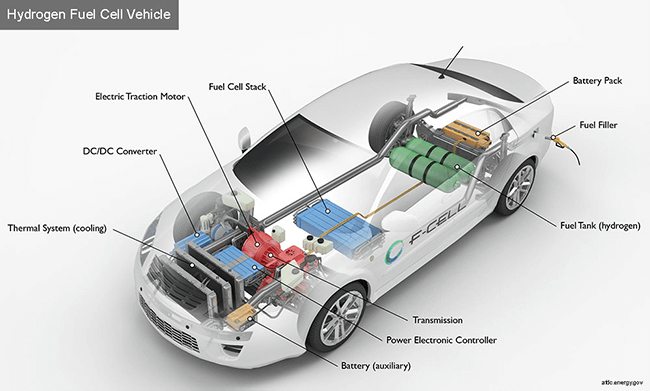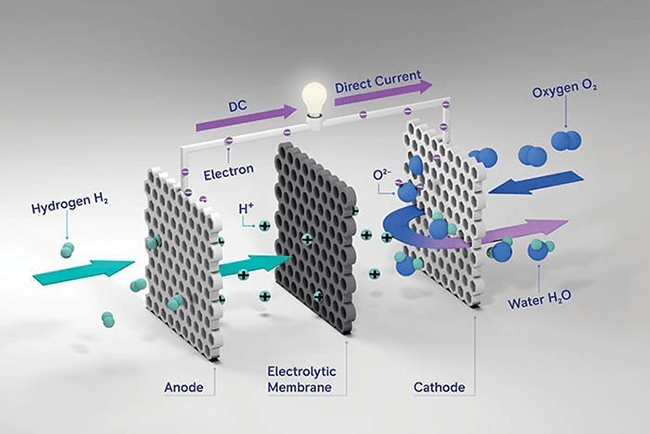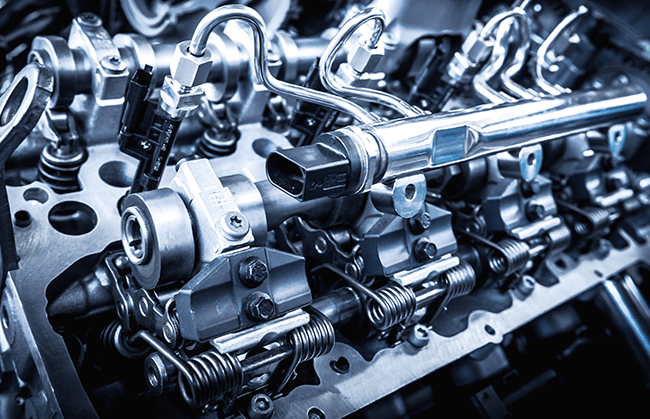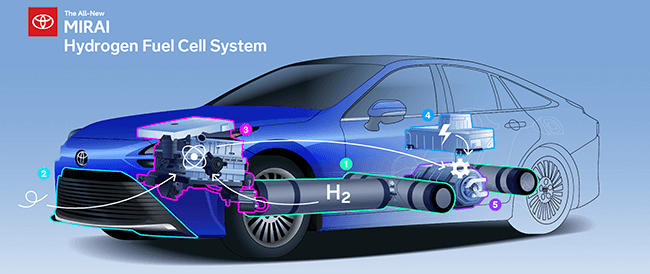Part 2: Are hydrogen and electric cars on the right ecological track?
Environment | 06-01-2022 | By Paul Whytock
Read part one here.
Petrol and diesel-powered cars are no longer a viable ecological proposition, and the race is now on between hydrogen and electric-powered vehicles. But deciding which of those two will take the chequered flag in the carbon-cutting Grand Prix is, in reality, anyone’s guess.
Currently, it is definitely the electric vehicle (EV) concept that is in the lead, and it undoubtedly has many ecological advantages, but in my opinion, it is not the long-term silver bullet that planet earth needs.
EVs have some serious problems to overcome before being seen as a climate game-changer. Not the least of these is the production of billions of lithium batteries that consume the planet earth’s resources, some of which are toxic, and the fact that efficient and cost-effective recycling has yet to be achieved.
Add to those negative aspects the challenges of producing sufficient green electricity to charge the batteries and improving today’s totally inadequate national infrastructures to get that electricity to the vehicles, and the practical problems are substantial.
Today, owning an electric car is really an elitist aspiration that requires you to have your own driveway and charging point. What happens to tower block residents? Will we see tall buildings draped in a spaghetti-like cloak of charging cables as owners try to plug into the pathetic number of roadside charging points?
Having said all that, hydrogen doesn’t have all the answers at present either, but perhaps it’s fair to say that it may prove to be the environmental winner in the longer term. Could it be the technology tortoise ambling along behind the EV’s hare?
Working Efficiently
Ultimately, it’s a given that the right vehicle propulsion fuel has to be low carbon but what’s not fully appreciated is it must do the job efficiently. Anything else is a wasteful use of energy resources.

Let’s kick off with hydrogen. For many years it has been called the fuel of the future. Vehicles fitted with hydrogen fuel cells (HFC) produce water from the exhaust pipe, which is a significant carbon win, and they have a very similar driving and refuelling experience to fossil fuel vehicles.
Recent technical investigations have shown that hydrogen has a ten times lower carbon emissions per mile footprint than EVs. An additional practical problem with EVs is they cannot be towed and broken down EVs have to be recovered on flatbed trailers.
Energy Vector Transition
However, hydrogen has its problems, and these relate to efficiency. A report by BloombergNEF has concluded hydrogen is currently inefficient because the energy must move from wire to gas to wire to power a car. This is called the energy vector transition (EVT).
Here’s an explanation of EVT. If 100watts of renewable electricity is used to power a hydrogen fuel cell vehicle, that electricity must be converted into hydrogen via the electrolysis process. This process is generally thought to be about 80% efficient, so there is an energy loss there.
The hydrogen produced by electrolysis has to be compressed, refrigerated and transported to the hydrogen re-fulling station, a process that is approximately 90% efficient. Once inside the vehicle, it is the job of the fuel cell to convert the hydrogen into electricity, and on the efficiency scale, this process is only about 60% efficient.
The final element in the energy vector transition process is the electricity created is used in the electric motor to power the vehicle and is approximately 95% efficient.
So what’s the bottom line? Well, it’s not that great. From the original 100watts of electricity, only about 40Watts gets used, which is an environmental no-no. Also, it’s worth remembering that the hydrogen creating electrolysis process uses electricity, which must be green and originate from renewable sources.
Looking at electric vehicles, it is undoubtedly the case that carmakers are overwhelmingly pro EVs, with major manufacturers making substantial financial investments in EV production. Volkswagen, for instance, has been quoted as saying, “The conclusion is clear. In the case of the passenger car, everything speaks in favour of the battery, and practically nothing speaks in favour of hydrogen.”
Emissions Scandal
But should we take VW’s corporate word for this? Let’s not forget the VW emissions scandal regarding the performance of its diesel vehicles before we completely accept that company’s criticism of hydrogen in favour of electric vehicles.
In the diesel debacle, Volkswagen installed emissions software in over 10 million cars that meant they could sense the set parameters of an emissions drive cycle tests established by the Environmental Protection Agency (EPA). These became known as defeat devices, and when cars underwent emission tests in controlled environments, they were seen as fully compliant to required emission levels.
However, when driven normally, the car’s software switched how the car was working with the result that heavier nitrogen-oxide emissions (NOx), a cancerous pollutant, up to forty times higher than legal limits, were emitted.
But getting back to the efficiency-power-battle between EVs and hydrogen and using the same 100watts of power as in the hydrogen example, the electricity employed in an EV runs purely from wire to wire. This 100watts of power from the source of the electricity loses about 5% of efficiency in its journey through the grid.
A further 10% of energy is spent charging and discharging the lithium-ion battery, plus another 5% from using the electricity to make the vehicle move. This takes usage down to 80watts. So the bottom line in the efficiency battle between hydrogen and electricity is that hydrogen is only half as efficient.
But it’s not all bad news for the advocates of hydrogen-fuelled vehicles. As previously mentioned, a big problem with lithium battery technology is that not only does it soak up planet earth resources in terms of its manufacturing ingredients, but recycling them is still an unanswered challenge. And charging them can take hours, which is inconvenient, whereas hydrogen vehicles would take a similar time to petrol and diesel cars to refuel.
Japan’s government sees this quick refuelling of hydrogen vehicles as a big advantage and invests heavily to create the infrastructure needed to promote hydrogen vehicles. Along with private companies like Toyota, the country has helped build and operate 100 hydrogen fueling stations, and Japan has a target of 900 by 2030. Toyota hopes there will be enough hydrogen vehicles to make the stations profitable by then.
Hydrogen Climate Potential
But the real win for hydrogen is its potential to truly decrease global emissions of CO2 by anything up to 30%. But as mentioned in a previous article, how the hydrogen is produced is key to achieving this result. Currently, far too many hydrogen-generating processes are negative when it comes to the carbon footprint.

However, new hydrogen production methods are being investigated all the time, and one such method, the proton exchange membrane, might prove to be 85% efficient.

There is also a lot of work happening where hydrogen is being used in combination with internal combustion engines (ICEs). This is not a new idea. Ford has developed a production-ready hydrogen-powered vehicle, and BMW and Toyota also have cars capable of running on a hybrid hydrogen and ICE concept.
But it does have a major disadvantage. When burning hydrogen, there are zero CO2 emissions; however, burning hydrogen in an ICE produces harmful nitrogen oxides. Still, there are ways to minimise this, like using urea-based selective catalytic reduction similar to that employed in modern diesel engines.
The bigger issue, as we’ve previously explored, is poor efficiency. Energy is already wasted in generating the hydrogen from renewables, and by the time the hydrogen is burned in an engine and the power transferred to the transmission, and ultimately the wheels, only about 25% of the energy value of the hydrogen is actually transferred.

That’s why fuel-cell-electric cars like the Toyota Mirai make more sense when using hydrogen as a fuel. Here, hydrogen is combined with oxygen to create electricity, which powers an electric motor that directly powers the wheels. Here the efficiency is closer to 50%. And there are also no harmful emissions, just water.
Battery Swap Shops
When it comes to minimising the environmental wastefulness of lithium EV batteries, China has developed a plan that involves swap shops. China has EV sales of more than one million a year, and infrastructure is being created whereby owners can drive onto forecourts and quickly swap batteries.
According to BloombergNEF, the Shanghai-based car manufacturer NIO claims a three-minute swap time at these stations. China is planning to build a large number of them, and there could be 3,000 battery charging stations across the country in a few years.
Not only is this an answer to the range anxiety of EV owners, but it also addresses the high cost of electric cars. Batteries make up about 25% of the average sale price of electric vehicles.
But how does this battery swap idea actually help the environment? That comes from the fact that surplus renewable electricity could be used to re-charge swapped batteries. But it must be renewable and not fossil-fuel produced; otherwise, there is little carbon-reducing merit in the scheme.
So trying to decide whether EVs or hydrogen propelled vehicles will win the ecological carbon footprint cup is pretty much impossible to say. However, I think that a global proliferation of billions of very large lithium batteries will eventually have a significant negative ecological impact on Earth.
Of course, some people think the answer could be in a hybrid concept where EV and hydrogen technology are combined to create the winning ecological solution the world needs, and they may well have a point.
In the first of two parts, Paul examined the environmental impact of hydrogen and electric vehicles. You can read part one here: Are hydrogen and electric cars really on the right ecological track?

